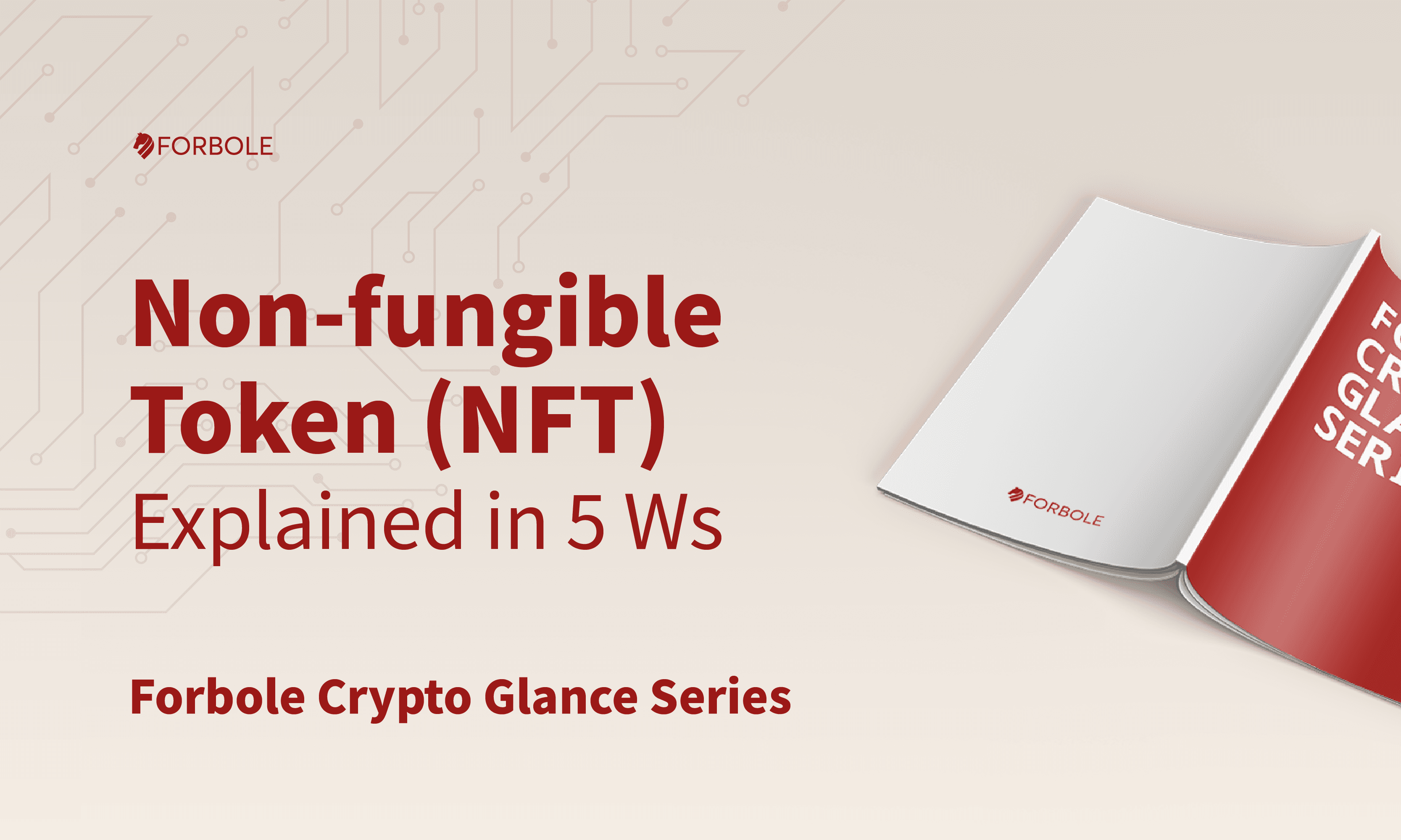Forbole Crypto Glance Series
In this series, we are going to try to explain some blockchain/crypto concepts and terms in simple words, aka non-tech friendly 😉.
Non-fungible token or NFT is one of the most heated topics in the blockchain space recently. You might have come across news saying that some digital art pieces sold in millions of dollars via NFTs. It is reported that more than $2 billion was spent on NFTs in Q1 2021. So why NFTs become so popular and what it has to offer to the world?
What is an NFT
As the name suggested, these tokens are non-fungible, as opposed to fungible tokens. Fungible tokens means that every token is identical and they are interchangeable. Most cryptocurrencies are fungible, including bitcoin, ERC-20 tokens, etc.
On the contrary, non-fungible tokens indicate the asset they represent is distinct respectively. You can take non-fungible as unique, and every NFT is one-of-a-kind.
Please note, NFT has to live on blockchains. In other words, if you take a fancy picture on your smartphone and send it to your friends via IM apps, that picture does not count as an NFT. It would be if it is associated with an token minted on a blockchain with unique identifiers.
Who invented NFTs
Can't say exactly who invented NFT but it got to be related to the Ethereum community. The first (but don't take my word for it) NFT is actually a ERC-721 token. It was started as a EIP (Ethereum Improvement Proposals - another thing on Ethereum, just skip it if it sounds unfamiliar to you) draft by dete, CTO of Dapper Labs. The team later on developed the CryptoKitties project, which shocked the entire crypto space and made NFTs a thing.
In short, if you really need to put a name on NFT, then Dapper Labs could be your guy. Anyway, this team is crucial in the history of NFTs. They would keep amazing you.
When to use NFTs
NFTs can be considered as a Proof-of-Ownership for a wide variety of assets, such as art, music, wearables, in-game items, or any digital and physical forms of assets. If you would like to prove your ownership of a certain item without associating with your personal ID, then you could consider NFTed your asset. NFTs become beneficial to digital content creators and collectors in the digital era as people find it more difficult to prove originality and ownership of digital contents, since replicas are easy to make.
Why NFT
Most people use NFTs to prove their ownership have some certain concerns of privacy and anonymity. It is also easy to track the ownership and prove authenticity of a NFTed asset leveraging the blockchain technology. Besides, the token value might go up in the future, so you could kill three birds with one stone.
It is basically like you own a bunch of stuff, and the world knows you own them, but the world doesn't know who you are in the world (a lot of world words 😏), while the price of both your collections and the NFTs you own have a chance to go higher in the future.
Where to find/sell/buy NFTs
First, you would need to get some native blockchain tokens to set foot in any NFT marketplace. The most popular NFT marketplaces are on Flow and OpenSea. So get yourself some $FLOW or $ETH to start with. We are going with Flow.
Flow Network is a Proof-of-stake blockchain developed Dapper Labs (like I said above, they would keep amazing you) and currently supporting multiple NFT projects, including NBA Top Shot - NBA highlights turned into NFTs and can be traded among fans. Flow is technically not a NFT marketplace itself similar to OpenSea, but it is hosting several marketplaces and in every marketplace, users can pay with FLOW token for a faster and smooth experience, though some marketplaces also accept other forms of payment.
Several digital artists have issued their unique collections on Flow and dropped to fans. Do check them out if you are interested in digital arts and collectibles, or considering your first NFT drop as an artist.
You can also track NFT trading and projects on this website: NonFungible.com.
That's all for NFTs in our first run. See you in the next post. In the mean time, keep Forbole in your thoughts:
